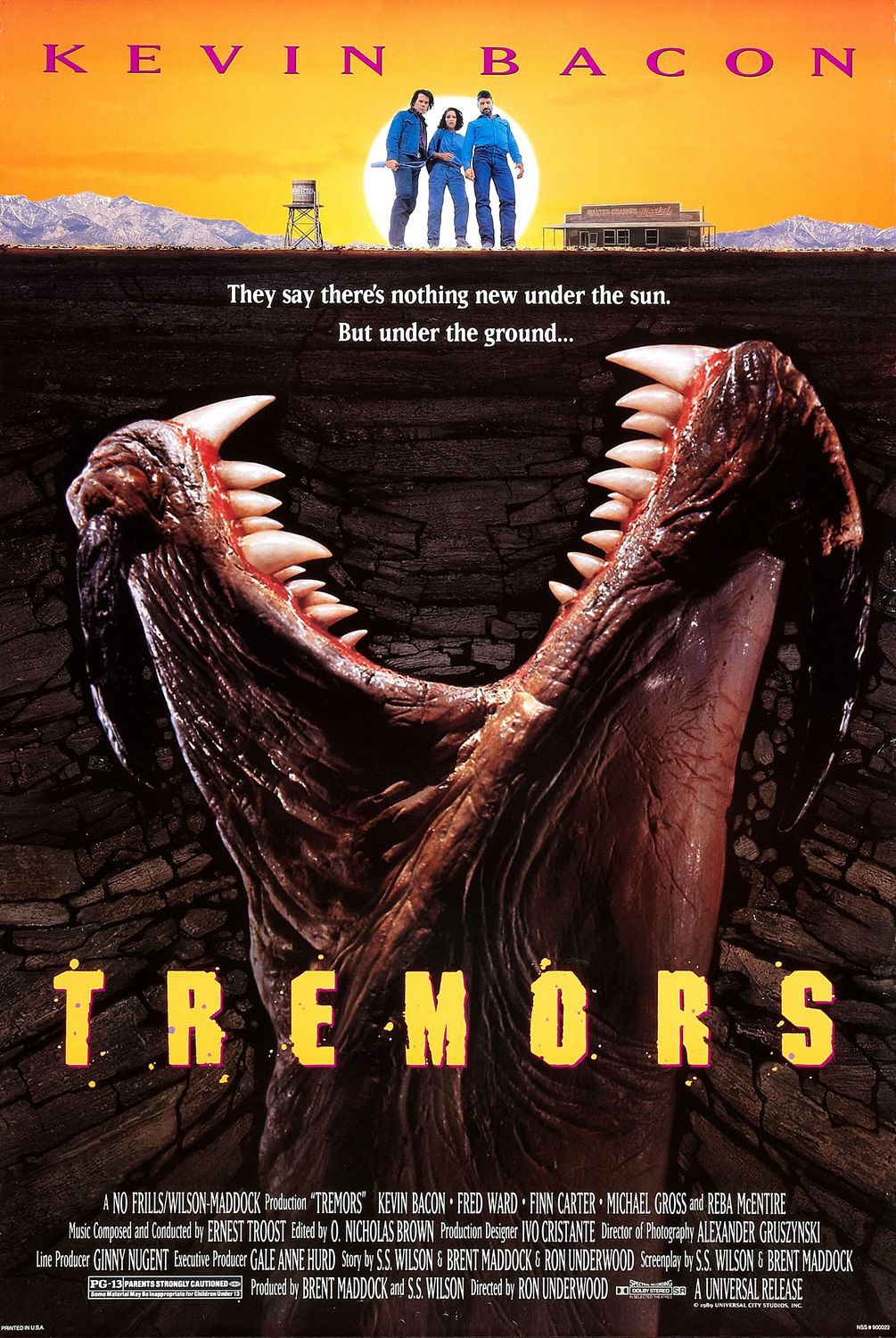“Tremors” (1990): A Cult Classic That Blends Horror, Comedy, and Adventure – Film Review

When “Tremors” burrowed its way into theaters in 1990, it was unclear whether this unique blend of horror, comedy, and western elements would resonate with audiences. Directed by Ron Underwood and starring Kevin Bacon and Fred Ward as the leads, “Tremors” has since become a cult classic, celebrated for its clever script, inventive creature design, and the chemistry between its cast. This review aims to unearth the reasons behind the film’s lasting appeal and the behind-the-scenes efforts that brought the town of Perfection, Nevada, to life.
The Setting: Perfection, Nevada
Perfection, a secluded desert town, becomes the unlikely epicenter of monstrous attacks by subterranean creatures dubbed “Graboids.” The film’s setting is a character in its own right, with the vast, open landscapes of the Nevada desert providing a stark backdrop to the horror-comedy unfolding within it. The isolation of Perfection adds to the suspense, as the characters have limited means of escape and must use their ingenuity to survive.
Character Dynamics and Performances
At the heart of “Tremors” is the duo of Val McKee (Kevin Bacon) and Earl Bassett (Fred Ward), two handymen who dream of leaving Perfection for a better life. Their camaraderie and banter provide much of the film’s humor and heart. The ensemble cast, including Michael Gross as survivalist Burt Gummer and Reba McEntire as his wife, Heather, adds to the dynamic mix of personalities that enrich the narrative. The performances strike a balance between the comedic and dramatic, making the characters endearing to the audience.
Creature Design and Special Effects
The Graboids, with their ingenious design, are a highlight of “Tremors.” The creatures are brought to life through practical effects, a decision that enhances the film’s tactile quality and suspense. The effects team, led by Alec Gillis and Tom Woodruff Jr., crafted the Graboids using a combination of puppetry, animatronics, and miniatures. This behind-the-scenes effort paid off, creating memorable and terrifying antagonists that are both believable and formidable.
Direction and Cinematography
Ron Underwood’s direction adeptly balances the film’s horror and comedy elements, ensuring that “Tremors” never feels tonally disjointed. The cinematography by Alexander Gruszynski captures the expansive desert and claustrophobic underground tunnels with equal effectiveness, contributing to the film’s atmosphere. The camera work is dynamic, with clever angles and movements that enhance the suspense and action sequences.
Script and Storytelling
Screenwriters S.S. Wilson and Brent Maddock crafted a script that is both witty and engaging. “Tremors” doesn’t just rely on its horror premise but builds its story around the characters, their relationships, and the community of Perfection. The screenplay is notable for its clever use of foreshadowing and its ability to subvert typical genre tropes, offering a fresh take on the monster movie formula.
Musical Score
The film’s score, composed by Ernest Troost, with additional music by Robert Folk, complements its adventurous spirit and suspenseful moments. The music enhances the film’s pacing and contributes to the overall mood, seamlessly transitioning between moments of tension and comedic relief.
Legacy and Impact
“Tremors” spawned a franchise, including sequels, a prequel, and a television series, underscoring its impact and the affection fans hold for the world of Perfection, Nevada. The film’s blend of genres, along with its memorable characters and innovative creature design, has ensured its status as a cult classic. “Tremors” demonstrates that with the right mix of humor, horror, and heart, a film can transcend its genre confines and resonate with audiences for decades.
“Tremors” is a testament to the power of creative storytelling and practical effects in filmmaking. Its success lies not just in its ability to scare and entertain but also in its exploration of themes of community, resilience, and friendship. As a piece of 1990s cinema, “Tremors” remains a delightful anomaly—a film that defies easy categorization and continues to enchant and thrill audiences with its unique blend of scares and laughs.




